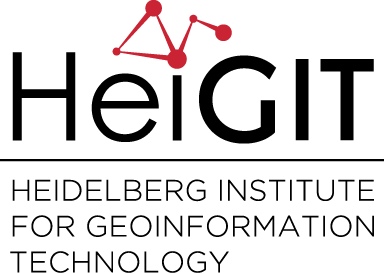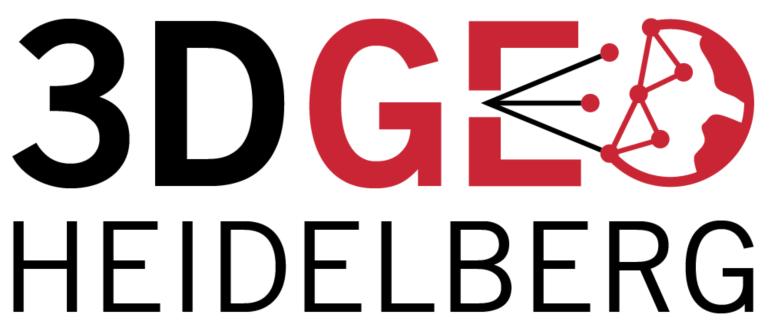Category: Research
-
Using OSM data to generate scenes for LiDAR simulations in HELIOS
A new tutorial for the 3DGeo‘s LiDAR simulation software HELIOS has been posted to the repository’s wiki page. It shows a simple way to generate scenes of real landscapes including building and vegetation models as well as terrain from NASA JPL’s SRTM data. When applied to OSM data in the city of Vienna, the obtained…
-
Classification of 3D ALS Point Clouds using End-To-End Deep Learning
In a new publication, we show how deep neural networks can be used in an end-to-end manner for the classification of 3D point clouds from airborne laser scan data. The research, based on the award-winning diploma thesis of Lukas Winiwarter at TU Wien, has now been published in “PFG – Photogrammetrie, Fernerkundung, Geoinformation“, the Journal…
-
2nd International Conference “Our Climate – Our Future: Regional Perspectives on a Global Challenge” in Berlin
From 23 to 25 September 2019, the 2nd International Conference “Our Climate – Our Future: Regional Perspectives on a Global Challenge” of the Helmholtz Climate Initiative “Regional Climate Change” (REKLIM) took place in Berlin, Germany. The conference programme included keynote speeches, oral presentations, poster presentations, networking opportunities and a number of additional discussion platforms. Six…
-
Follow-up BMBF/MOST project “ER3DS” meeting at National Cheng Kung University in Taiwan
Within the BMBF-funded project ER3DS (Emission Reduction in Smart Cities Using 3D Spatial Sensing and Analysis) a second workshop and exchange visit was organized and hosted by the National Cheng Kung University (NCKU) in Tainan, Taiwan, from 16 September to 19 September 2019. The first day included two lectures at the Dept. of Geomatics (Prof.…
-
Call for papers for DGPF Annual Conference 2020 in Stuttgart (Deadline 31 Oct 2019)
We would like to invite you to contribute actively to the DGPF Annual Conference 2020 (Jahrestagung) in Stuttgart. Deadline for abstract submissions (500-1500 words) is 31 October 2019. Our Working Group for Geoinformatics is looking forward to recent research and workbench insights covering the full range of methods in geoinformatics. Go for it and submit…
-
Recap of HeiGIT @ FOSS4G 2019
First of all, thanks to everybody who attended our ohsome lab on OpenStreetMap History Analysis at last weeks FOSS4G in Bucharest. Even though there were eleven (!) tracks running in parallel, and our lab was not in the same location as the program track, we had some interested participants. Their affiliation ranged from public institutions…
-
HeiGIT presents ohsome Lab at FOSS4G 2019 Bucharest
This week, the annual conference FOSS4G (Free and Open Source Software for Geospatial) is taking place in Bucharest, Romania. The conference is organized by The Open Source Geospatial Foundation (OSGeo) and attracts over 1000 professionals from industry and academia each year. The HeiGIT Big Spatial Data Team will present the ohsome platform and related tools such as the…
-
Place in GIScience Paper at Platial 2019
The International Symposium on Platial Information Science PLATIAL’19 will be held this year at the University of Warwick in September 5-6. The programme has just been published and includes a paper from our research group about a systematic literature review about Place in the GIScience Community. As the first PLATIAL’2018 symposium held in Heidelberg 2018…
-
Interested in time-dependent routing?
We are delighted to invite you to join a workshop on open-source routing with time-dependent restrictions, see http://giscienceblog.uni-hd.de/2019/04/17/project-tardur-starts-open-source-routing-with-time-dependent-restrictions/. The workshop is taking place on Friday before the State of the Map conference, 20th September 2019 in Heidelberg. It is free of charge and will last from 9:00 to 16:00 with a lunch break in between.…
-
High-frequency and high-resolution monitoring of rock glacier dynamics
How do the dynamics of surface change on a rock glacier look like over an entire summer season? And how is rockfall activity and storage and talus supply from the headwall of a rock glacier related to patterns of its movement? These and other questions are currently investigated within the AHK-4D and Geomorph4D projects of…
-
Green spaces in cities promote well-being and mental health — ‘Nature’ Neuroscience study published with participation of GIScience researchers at Heidelberg University
INTERDISCIPLINARY NATURE STUDY SHOWS THAT INNER TOWN GREEN DIRECTLY INFLUENCES ON CITY RESIDENTS Inner city green areas such as lawns, flowerbeds, trees or parks can directly improve the well-being of city dwellers. These are the findings of a recent study conducted by scientists from GIScience Research Group at Heidelberg University and the Heidelberg Institute for…
-
Feasibility of Using Grammars to Infer Indoor Room Semantics
Current indoor mapping approaches can detect accurate geometric information but are incapable of detecting the room type or dismiss this issue. A recently published paper investigates the feasibility of inferring the room type by using grammars based on geometric maps. Specifically, we take the research buildings at universities as examples and create a constrained attribute…


